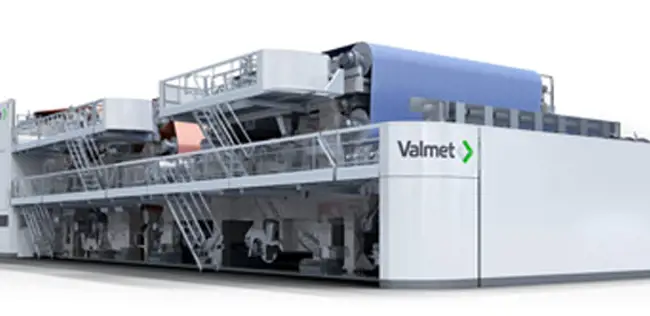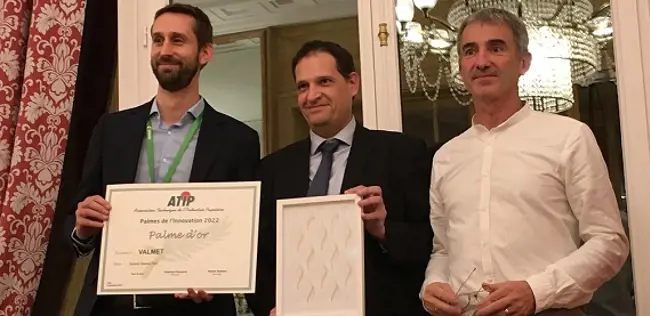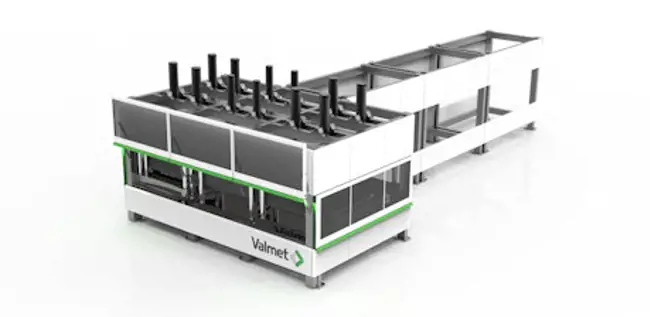Disruptive co-innovation
Aug 2, 2023
The green transition creates sustainability challenges for the fiber-related industry. How can we use co-innovation to tackle these challenges?
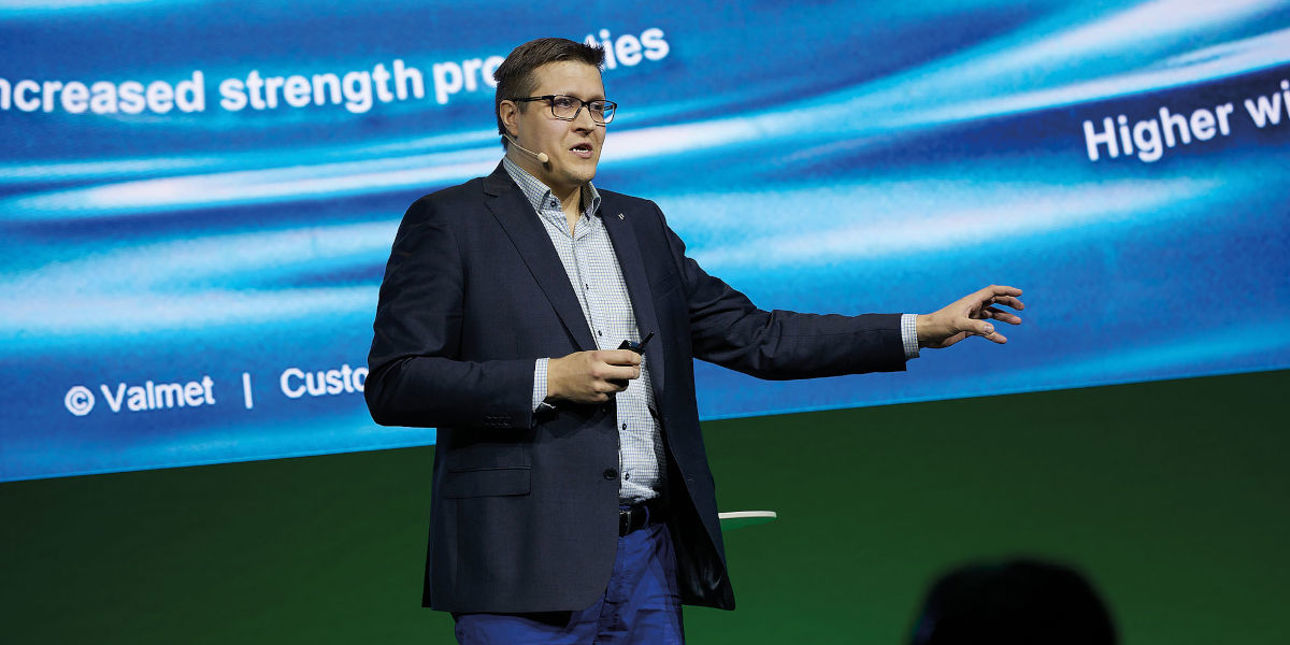
Pulp, paper and board companies, and other fiber-based businesses, are under increasing pressure to improve the sustainability of their operations and products, both from their customers and regulators. To meet these demands, companies need to invest in new, more efficient and lower carbon solutions. The markets, which are changing ever faster, provide favorable conditions for the emergence of new and disruptive technologies. At Valmet Customer Days 2023, Sampo Immonen, Director, Line R&D, Board and Paper Mills, Valmet, explained how disruptive co-innovation can help create solutions that support the green transition.
What is disruptive co-innovation?
A disruptive development is a big jump in technology that changes the way we do things. It’s not an iterative development, it’s something completely new. “There’s a quote from the business professor, Oren Harari, which illustrates the idea very well,” says Immonen. ‘The electric light did not come from the continuous improvement of candles.’ While continuous improvement is always important, a disruptive development is needed every now and then to take humankind forward.”
Many times, big innovations are rather simple in the end, you just have to make them happen.
Co-innovation is a method of cooperating with partners, such as research institutes, companies and experts in a network, to create and develop new ideas, processes, services and products together. And, when you put disruptive development and co-innovation together, you get disruptive co-innovation, which is a cooperative way of seeking out and developing innovations that have the potential to transform an industry.
Simple ideas and the ripple effect
“Many times, big innovations are rather simple in the end, you just have to make them happen,” says Immonen. “One example of this is Valmet’s newly developed Sleeve roll technology. Basically, it’s a pre-pressing technology that presses the water out in the forming section, instead of using vacuum for the dewatering. In the end it’s a really simple idea. Originally, we were aiming to improve energy efficiency but we noticed a kind of ripple effect. A ripple effect is when other things happen due to the innovation that you didn’t expect in the beginning, and it’s often associated with disruptive development.”
“For example, we noticed that the new Sleeve roll technology didn’t only increase the energy efficiency of the process, but it also improved the machine capacity,” Immonen adds. “Traditionally in the forming section, the faster you run, the relatively harder it is to dewater. With our Sleeve roll this old truth about dewatering is ready to retire. The faster you run, the more water you remove, giving us flexibility on the capacity side. We also found that it improved the strength properties in the board and, at the other end of the machine, it has resulted in higher winder capacity. Again, things we weren’t expecting. It has also turned out that the technology is very flexible and during different pilot trials, we have noticed that the technology fits with pretty much any concept we have.”
A changing market pushes for innovation
When there’s uncertainty and change in a market, it creates more need and opportunity for innovations. “Before about 2010 the market was calm – sure, there were faster, wider machines but the basic products and principles stayed pretty much the same,” says Immonen. “Since then, there have been big changes led by the market, by the decline in the paper business and by the shifted dynamics in the industry. Now customers are more sustainability oriented, and legislation and all the mega trends are pushing towards change. This means that more money is being invested and more technological innovation is happening.”
With disruptive co-innovation we’re looking for new, disruptive ideas that create ripple effects.
The changes in the market will also impact market entry barriers. “Our industry – at least part of the industry – is clearly moving to a market state where both the market and the technology are leading change. This is creating new blue oceans for the industry and traditional entry barriers are disappearing,” Immonen continues. “I asked the audience at the Valmet Customer Days how they thought the market entry barriers for emerging new technologies in the fiber-based industry will change in the future. Over half of the respondents thought that the barrier will lower in the future.”
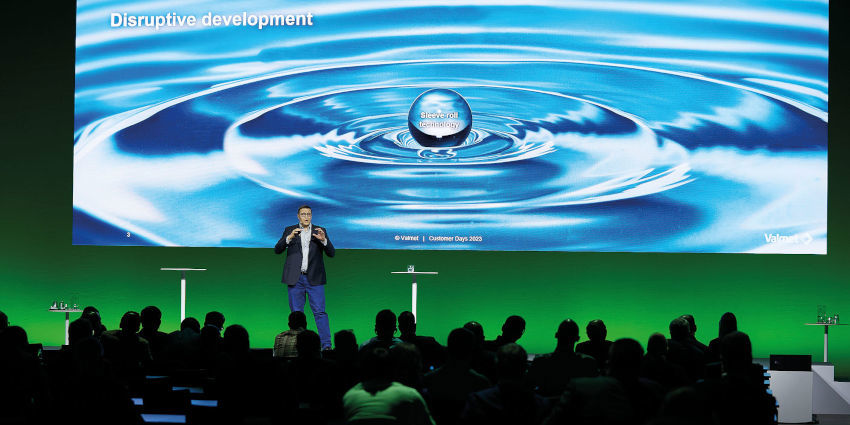
The risks and rewards of innovation
“Time is a very important topic when we talk about disruptive development and fast market change,” Immonen explains. “Typically, if you move fast, it means you take a bigger risk at the beginning and invest more money in R&D. However, the benefit is that if you hit your target, you have the possibility to grow much faster than either medium risk or safe investments. And if you’re first, it can determine your market position after the early phases of R&D and technical development.”
“On the other hand, being first is not an easy choice to make – you don’t always win,” he adds. “When you are first, you are more likely to also make the inevitable mistakes and these always cost money. Copycats will learn from your mistakes and try to get around your patents and ideas. And, in the end, the big question is whether you came up with the right solution not. You cannot know at the start and someone might come up with a better solution. However, it is good to remember that the majority of the world's largest companies have reached their status by excelling in embracing the disruptive elements of innovation and pushing the boundaries forward. Being first is not easy, but it undoubtedly holds potential for great value.”
The benefits of co-innovation
“We have a disruptive co-innovation project together with Metsä Spring and an extensive co-operation network of partners. In this project we are creating the next leap forward in the area of molded fiber technology,” Immonen says. “Why did we decide to solve this challenge with the method of co-innovation? Typically, in our industry a big development project from cradle to industrial scale takes from 10 to 17 years. That’s much too slow in a fast-moving market like molded fiber. When we looked at the market and business potential for our solution – Valmet 3D Fiber – we knew we had to hit a full development time of 5-6 years. That’s a challenging time frame. With co-innovation, we have an R&D partner network that gives us access to the best and most capable minds, we get capabilities that we don’t have to develop from scratch, and because everyone already knows what they’re doing in their own field, progress is much faster and we can mitigate risks and get through the required development steps much faster.”
“With this approach, we’ve been able to shorten the timeframe for development to one third of what it normally would have been. And with this we’re enabling the disruptive innovation to happen and letting the ripple effect come to be – hopefully revealing benefits we didn’t even expect in the beginning,” Immonen concludes.
Text Peter Cura
Related articles
